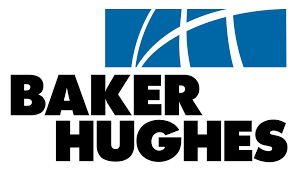This section provides an overview of the research projects currently underway, as well as those that have been completed. Each project represents a significant contribution to advancing knowledge within our areas of expertise, reflecting rigorous scientific methodology, interdisciplinary collaboration, and a commitment to addressing complex challenges. Brief summaries offer insights into research objectives, methodologies employed, principal outcomes, and broader implications.
Seismic dataset regularization and diffraction separation in finite offset domain for OBN acquisitions
Description: Research and development of seismic processing techniques in the finite offset domain for Ocean Bottom Nodes (OBN) acquisition geometries, aiming to enhance imaging accuracy and subsurface characterization. As part of an integrated OBN processing package, the study includes the mathematical formulation and implementation of Common Reflection Point (CRP) regularization to improve data consistency, the development of a diffraction separation algorithm in the finite offset domain for better distinction between reflection and diffraction energy, and feasibility studies on a seismic tomography approach based on CRP gathers to refine velocity models.
Status: In progress

Modeling seismic diffraction events using Finite Elements Method
Description: Research and development of seismic data modeling strategies for 2D and 3D acquisition geometries using the Finite Element Method (FEM), with particular emphasis on diffraction events. The study aims to assess the feasibility of FEM for seismic data modeling, investigate mesh construction strategies for arbitrary geometries in 2D and 3D applications, develop a prototype mesh generator for FEM, and evaluate the characteristics of reflection and diffraction events obtained with FEM in comparison to the Finite Difference Method (FDM).
Status: In progress

Algorithms and Methods for Pre-Stack Diffraction Separation and Anisotropic Parameter Extraction in High-Performance Computing Systems
Description: Research, development, and practical implementation of diffraction separation, 5D regularization in the pre-stack domain, and the extraction of kinematic parameters associated with anisotropic properties. The results obtained will have direct applications in the industry, contributing significantly to the validation of migration velocity models in geologically complex settings, such as pre-salt reservoirs.
Status: Completed

HPC infrastructure upgrade of the High-Performance Geophysics lab
Description: Expansion of the high-performance computing (HPC) infrastructure at the High-Performance Geophysics (HPG) Lab. The upgrade includes the installation of a new HPC system capable of achieving up to 350 teraflops, significantly increasing computational efficiency. This advanced system will support ongoing research at HPG, enabling the development and implementation of innovative seismic processing technologies for large-scale 3D seismic datasets.
Status: Completed

Development and Application of Pre-Stack Processing, Regularization, and Imaging Techniques Using 3D HPC CRS Methods
Description: Extend the Common Reflection Surface (CRS) techniques developed in the previous study to the pre-stack domain and apply them to critical seismic imaging challenges. These include 5D regularization, 3D Common Reflection Point (CRP) migration, Normal Incidence Point (NIP) tomography, Image Incident Point (IIP) analysis, and stereotomography. Additionally, the project involves the development of an anisotropic CRS approach. All methodologies are being implemented within the SeisHPC framework, ensuring scalability and fault tolerance for large-scale computations on heterogeneous high-performance computing (HPC) clusters.
Status: Completed

Smart Compression of LWD Acoustic Data
Description: Development of advanced algorithms and software for intelligent data compression of Logging-While-Drilling (LWD) acoustic data. The primary objective is to design a pattern recognition algorithm capable of automatically identifying geological structures in acoustic images beyond the borehole. By integrating this algorithm into downhole image interpretation, the system will enable real-time data transmission to the surface acquisition system via mud pulse telemetry, enhancing the efficiency and accuracy of subsurface analysis during drilling operations.
Status: Completed

Development of Processing Algorithms and Seismic Imaging Techniques with Emphasis on Carbonate Reservoirs
Description: Research and development of advanced algorithms for seismic data processing and imaging in carbonate reservoirs. The objective is to integrate the Common Reflection Surface (CRS) method with state-of-the-art signal processing techniques commonly used in medical imaging, radar, sonar, and telecommunications. The project has led to the development of several key technologies, including: (1) a 2D/3D CRS stacking software, designed using high-performance computing (HPC) techniques, capable of processing seismic datasets up to terabyte scale; (2) a 2D/3D Normal Incidence Point (NIP) tomography software for constructing velocity models for depth migration, optimized for parallel computing; (3) a 2D/3D CRS post-stack time migration tool, currently in its final development stages; and (4) investigations into advanced time-to-depth conversion methodologies. Additionally, a ProMax®-compatible interface and user manual were developed to ensure seamless integration and operational deployment in production environments.
Status: Completed




